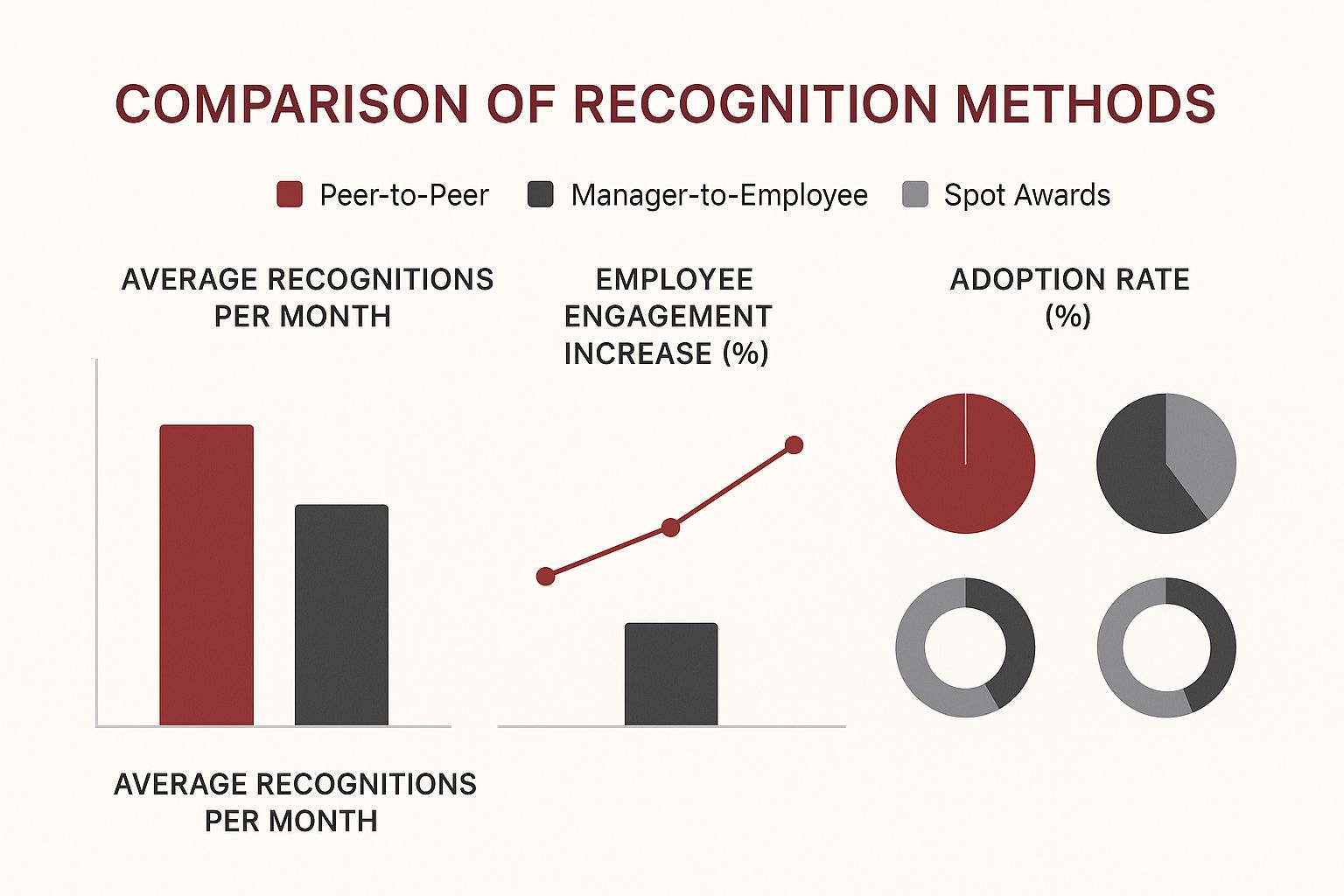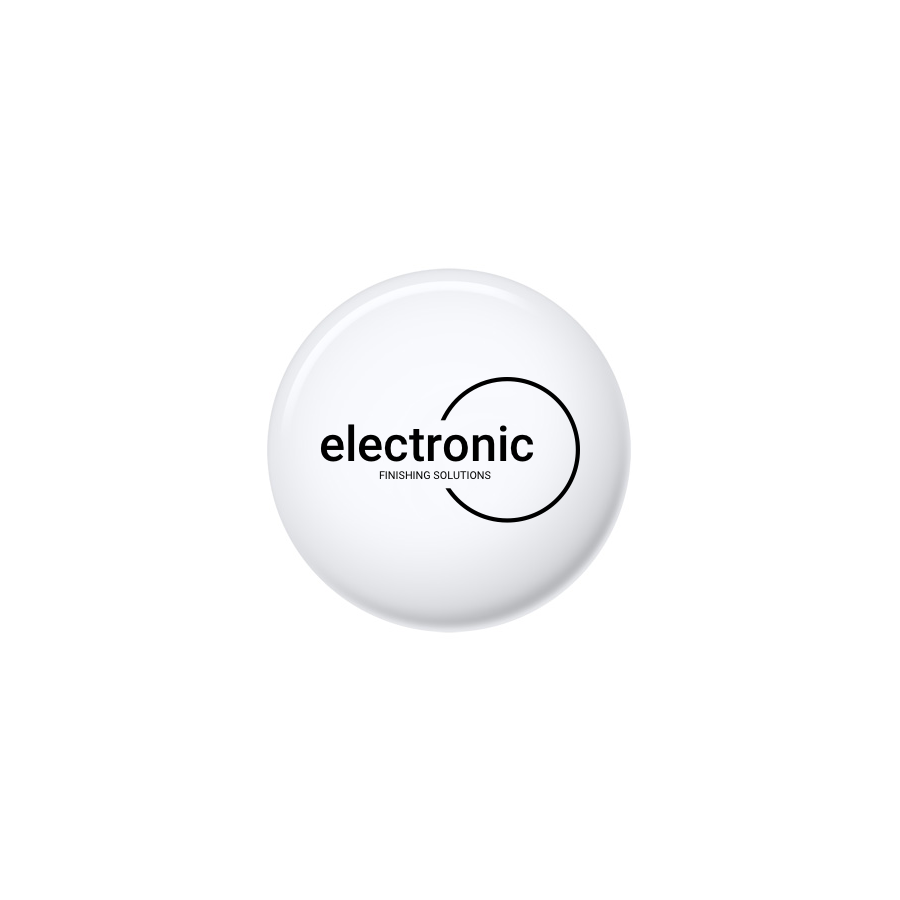Why Every Organization Needs a Recognition Framework
In today's competitive job market, attracting and retaining top talent is paramount. A structured employee recognition program is more than just a perk; it's crucial for building a thriving organizational culture. It strategically aligns recognition efforts with company values and business objectives, fostering a sense of belonging and purpose among employees. This framework goes beyond occasional "thank yous."
It creates a system where recognition is integral to the employee experience. This means recognition isn't spontaneous; it's planned, consistent, and tied to specific achievements and behaviors. A well-defined recognition framework offers numerous benefits.
It boosts employee morale and fosters a positive work environment. It also provides clear criteria for recognition, ensuring fairness and transparency. This, in turn, enhances employee trust and builds a sense of community within the workplace. This foundation is essential for creating a culture where everyone feels valued and motivated.
Moreover, employee recognition programs significantly impact how valued employees feel. 92% of workers feel valued in companies with recognition programs, compared to only 70% in companies without them. These programs also lead to an 11.1% increase in average employee performance. This data underscores the tangible impact of recognition on employee satisfaction and engagement. Learn more about employee recognition statistics here.
The Power of Structured Recognition
Spontaneous appreciation is valuable, but a formalized program amplifies its impact. A structured approach allows for consistent recognition across all departments and levels, minimizing bias. It ensures everyone has an equal opportunity to be recognized.
It also provides a platform for tracking recognition efforts and measuring their effectiveness. This data-driven approach lets organizations refine their recognition strategies and maximize their return on investment. It helps identify areas for improvement as well.
Transforming Culture Through Recognition
Organizations can cultivate a culture of appreciation and high performance by implementing a comprehensive employee recognition program template. This framework serves as a blueprint for recognizing and rewarding desired behaviors, reinforcing company values, and creating a positive feedback loop.
A well-implemented program fosters a sense of pride and ownership among employees, motivating them to contribute their best work. A well-structured leave policy can also improve the adoption of your new program. Here is a useful UK Employee Leave Policy Template. Ultimately, a strong recognition framework strengthens the entire organization. It creates a more engaged, productive, and fulfilling workplace for everyone.
Essential Elements of High-Impact Recognition Templates

Building a successful employee recognition program template takes careful planning. It involves considering key elements that create a meaningful impact and drive both employee engagement and organizational success. This requires a strategic approach to every aspect, from nominations to rewards.
Defining Clear Objectives
Effective recognition programs begin with well-defined objectives. These objectives must align with your organization's core values and strategic goals. For example, if innovation is a core value, your program should recognize innovative employees. This reinforces desired behaviors and contributes to overall success. Clear objectives also provide a framework for measuring the program's impact.
Establishing Transparent Eligibility Criteria
After setting objectives, establish clear eligibility criteria. Outline who is eligible for recognition and for what specific achievements. Transparency builds trust and prevents the perception of favoritism. It also simplifies nominations and ensures fairness.
Streamlining the Nomination Process
A complicated nomination process can discourage participation. Your program template should include a simple and accessible process, perhaps using an online platform, dedicated forms, or both. The goal is to make nominating a colleague easy, regardless of their role or location. This encourages wider participation and ensures valuable contributions are recognized.
Designing Meaningful Recognition Categories
To resonate with employees, your program must incorporate diverse recognition categories. These categories should reflect various contributions and align with company values. Examples include categories for innovation, customer service, teamwork, and leadership. A variety of categories allows you to acknowledge a wider range of achievements and tailor recognition to individual strengths.
Establishing Fair Evaluation Methods
The evaluation process is key to maintaining the program's integrity. Your template should outline objective criteria for evaluating nominations, such as a scoring system, peer review, or manager approval. Consistency and fairness are paramount to building confidence and ensuring merit-based recognition.
Before we discuss reward structures, let's look at the essential components of a recognition program template. The following table outlines critical elements and implementation considerations.
Essential Components of Recognition Program Templates
| Component | Purpose | Implementation Considerations | Customization Options |
|---|---|---|---|
| Objectives | Define the program's goals and align with organizational values | Tie objectives to specific, measurable outcomes | Align with company mission and strategic priorities |
| Eligibility Criteria | Clarify who can be nominated and for what | Ensure criteria are objective and transparent | Define criteria based on roles, departments, or performance levels |
| Nomination Process | Facilitate easy and accessible nominations | Implement an online platform or use simple forms | Allow for self-nominations or peer-to-peer nominations |
| Recognition Categories | Acknowledge diverse contributions and achievements | Create categories that reflect company values | Develop custom categories tailored to specific projects or initiatives |
| Evaluation Methods | Ensure fair and consistent evaluation of nominees | Establish a clear scoring rubric or review process | Incorporate peer feedback or manager approvals |
| Reward Structures | Motivate employees with meaningful rewards | Offer a variety of rewards to cater to individual preferences | Tie rewards to specific achievements or milestones |
This table provides a helpful framework for designing your recognition program. Consider each component carefully to maximize its impact.
Creating Motivating Reward Structures
Finally, your program must offer motivating rewards. These rewards should go beyond generic gifts and reflect the value of the achievement. Consider monetary bonuses, extra time off, professional development opportunities, or personalized gifts. Offering a diverse range of rewards caters to different motivations and ensures the recognition is valued and appreciated. A well-designed reward structure reinforces positive behaviors and encourages continued high performance.
Finding Your Perfect Recognition Program Match
Not all employee recognition programs are the same. What works well for one company might not work for another. This section helps you navigate the different types of recognition programs to find the perfect fit for your organization. We'll compare formal and informal structures, peer-driven and leadership-led approaches, and individual and team-based recognition systems. Choosing the right approach is essential for maximizing impact.
Understanding Different Recognition Frameworks
Formal programs offer structured processes with clear criteria, ensuring fairness and transparency. These programs often involve established procedures and guidelines for nominations and rewards.
Informal recognition, like a quick "thank you," can boost morale instantly. It's a spontaneous way to show appreciation for everyday efforts.
For example, a formal program might recognize top performers each quarter, while informal recognition could celebrate a team's successful project completion. Balancing these two approaches is key.
Peer-driven recognition empowers colleagues to acknowledge each other's contributions, fostering camaraderie and teamwork. It creates a sense of shared appreciation among team members.
Leadership-led programs provide top-down appreciation, reinforcing organizational values. This shows employees that their work is valued by those in leadership positions.
Many organizations combine both peer-driven and leadership-led recognition. This allows for recognition from all directions, creating a more well-rounded appreciation system.
Individual recognition celebrates personal achievements, motivating employees to strive for excellence. It highlights individual contributions and accomplishments.
Team-based systems highlight collaborative efforts, encouraging teamwork and shared success. This type of recognition reinforces the importance of working together towards common goals.
You can tailor your employee recognition program to reward specific types of work, promoting both individual excellence and team synergy. This flexibility allows you to align your recognition efforts with your overall business objectives.
Matching Your Culture with the Right Template
The best recognition program depends on your company culture and goals. Some cultures thrive on spot recognition, offering immediate rewards for exceptional work. For example, a sales team might benefit from on-the-spot bonuses for closing deals.
Other companies prefer milestone celebrations, recognizing significant achievements or anniversaries. This can create a sense of shared accomplishment and celebrate key milestones.
Performance-based awards are ideal for driving specific outcomes, while values-driven acknowledgment reinforces desired behaviors. Each program type has its advantages, and the most effective approach often integrates elements of several.

The infographic above compares three common recognition methods: Peer-to-Peer, Manager-to-Employee, and Spot Awards. It highlights the effectiveness of each method across various metrics, including average recognitions per month, employee engagement increase, and adoption rate. Peer-to-peer recognition, while having a slightly lower employee engagement increase than manager-to-employee recognition, shows a significantly higher adoption rate and average number of recognitions. This suggests that peer-to-peer programs can contribute to a more consistent culture of appreciation.
The use of employee recognition varies geographically. In North America, approximately 89% of organizations have a program, compared to 68% in Asia and 65% in Europe. Even within regions, effectiveness differs. While 86% of U.S. employees report receiving recognition, only 33% feel engaged at work. This emphasizes the need to prioritize quality over quantity in recognition programs. Find more detailed statistics here.
Before presenting the comparison table, let's introduce the various recognition program types and their suitability in different organizational contexts. The following table provides a concise overview of each program's key features, benefits, and potential challenges.
| Program Type | Key Features | Best For | Implementation Complexity | Cost Considerations |
|---|---|---|---|---|
| Formal Programs | Structured criteria, defined processes, regular awards | Large organizations, promoting fairness and transparency | High | Moderate to High, depending on reward structure |
| Informal Programs | Spontaneous recognition, simple "thank yous", small gestures | Small teams, fostering immediate appreciation | Low | Low |
| Peer-to-Peer | Colleagues recognize each other, promotes teamwork | Building strong team bonds, increasing morale | Moderate | Low to Moderate |
| Leadership-Led | Top-down recognition, reinforces company values | Highlighting achievements aligned with organizational goals | Low to Moderate | Moderate |
| Individual Recognition | Celebrates individual achievements, motivates personal excellence | Highlighting individual contributions, promoting healthy competition | Low | Low to Moderate |
| Team-Based Recognition | Recognizes collaborative efforts, fosters team spirit | Promoting teamwork, celebrating shared success | Moderate | Moderate |
This table provides a helpful overview of the different recognition program types available. Choosing the right type depends on your specific organizational culture, budget, and goals. Consider the complexity of implementation and the potential cost implications when making your decision.
Adapting Templates to Your Unique Needs
Companies across various industries tailor employee recognition programs to their specific needs, budgets, and team dynamics. A tech startup might prioritize peer-to-peer recognition with personalized gifts, while a large corporation might opt for a formal points-based system with tiered rewards.
By carefully evaluating different program types and considering your unique circumstances, you can choose a template that aligns with your company culture and drives positive results. This ensures your chosen program doesn't just fit your organization—it contributes to its overall success.
Launching Your Recognition Program: A Practical Roadmap

Transitioning from the planning stages to a live employee recognition program requires careful thought and a structured approach. Think of it as a journey – you need a good map to get to your destination. This section offers a practical guide to launching your program smoothly, ensuring it resonates with your team and achieves its goals. It involves a mix of strategic planning, clear communication, and ongoing evaluation.
Securing Leadership Commitment
First things first: get your leadership team on board. Present a compelling case highlighting the return on investment (ROI) of recognition programs. Show them the data – how recognition can reduce employee turnover, improve productivity, and boost overall morale. A data-driven approach justifies the investment and secures that all-important leadership support.
Building Your Implementation Team
Assemble a cross-functional team to manage the implementation process. Include people from different departments to get diverse perspectives and insights. This team will steer the rollout, tackle any challenges, and ensure alignment with the broader organizational objectives. Their combined expertise is essential for success.
Creating a Realistic Timeline
Develop a realistic timeline that respects everyone's workload and avoids overwhelming your team. Break the launch down into manageable phases, each with clear deadlines. This structured approach keeps the project on track and allows for easy progress monitoring.
Communicating Effectively
Communicate the program launch clearly and enthusiastically throughout the organization. Generate excitement by showcasing the benefits for employees. Explain the nomination process, different recognition categories, and the types of rewards available. Clear communication is key to driving participation.
Training Your Managers
Train your managers on how to recognize employees effectively and give meaningful feedback. Equip them with the resources they need to integrate recognition into their daily routines. Empowered managers become program champions, reinforcing positive behaviors.
Documenting the Process
Document all program guidelines, procedures, and criteria in an easily accessible format. This promotes consistency and transparency. Clear documentation serves as a handy reference for both employees and managers, strengthening the program's integrity.
Choosing the Right Technology
Weigh the pros and cons of tech-enabled solutions versus manual recognition systems. Tech-enabled platforms offer automation and data analytics, while manual systems allow for more personalized recognition, but may require more time and effort. Choose the approach that best fits your organization's needs and resources.
Troubleshooting Common Roadblocks
Anticipate potential challenges during implementation, such as low initial participation or resistance to new processes. Develop strategies to address these proactively. For example, consider incentives for early adoption or offer additional training to address any concerns.
By following these steps, you can launch your employee recognition program effectively and cultivate a culture of appreciation. This roadmap lays the foundation for a positive and impactful program, benefiting both your employees and your company’s overall success. A strong launch sets the stage for a sustainable and effective program, boosting long-term engagement and positive outcomes.
Tailoring Your Template for Maximum Impact
An effective employee recognition program isn't a one-size-fits-all solution. It needs to reflect your organization's unique culture and workforce. Just as Electronic Finishing Solutions creates custom promotional electronics to help brands stand out, your recognition program should mirror your company's distinct identity. This personalization is key to maximizing the program's impact and achieving your desired results.
Adapting to Diverse Needs
A diverse workforce calls for a flexible recognition approach. Different generations, for example, may value different kinds of rewards. While some might appreciate experiences or professional development opportunities, others might prefer traditional gifts or extra time off. Consider the unique needs of remote and hybrid employees, too. Digital recognition platforms can help bridge the geographical gap and foster a sense of inclusion for those working outside a traditional office.
Cultural backgrounds also significantly influence how recognition is perceived and received. What motivates one person might not motivate another. Understanding and respecting these cultural nuances is crucial. Even industry contexts can shape preferences. A tech startup, for instance, might prioritize innovation awards, while a customer service-focused organization might value recognition for exceptional client interactions.
Balancing Standardization and Flexibility
While personalization is important, maintaining some standardization is equally vital. This ensures fairness and consistency across the organization. The key is finding the right balance. When launching your program, consider how you can incorporate best practices from other HR services, such as those outlined for background check services. Establish a core framework with standardized guidelines, while still allowing flexibility in the types of rewards and recognition offered. This provides a consistent experience while honoring individual preferences.
Gathering Employee Input and Adapting Across Departments
To understand what truly motivates your employees, ask them directly. Conduct surveys, hold focus groups, and encourage open feedback. This input offers valuable insights into which types of recognition resonate most. Gathering additional data through pulse surveys can further refine your understanding and ensure continued employee alignment. By incorporating employee feedback, you create a program they'll genuinely value.
Adapting your program across different departments or locations, while maintaining core principles, requires careful planning. Individual teams may have unique recognition needs, but aligning with overarching company values ensures consistency and fairness. This allows for targeted recognition within specific teams while upholding a shared organizational philosophy, fostering a sense of unity across the company.
In recent years, the focus on personalized employee recognition has grown substantially. By 2025, an estimated 80% of organizations plan to adjust their employee rewards and recognition strategies to prioritize customization. This shift aims to create more inclusive and engaging work cultures, with organizations increasingly emphasizing strong company culture, continuous learning, and upskilling as key program components. Learn more about these trends here. This focus allows for more meaningful and impactful recognition, ultimately boosting employee loyalty and performance.
Measuring What Matters: Recognition Program Metrics

Implementing an employee recognition program template is just the first step. To ensure its long-term success, you need to measure its effectiveness. This goes beyond simply tracking the number of rewards distributed. This section explores how to measure the true impact of your program and demonstrate a tangible return on investment. It's about understanding what truly drives success and using data to refine your approach.
Key Performance Indicators (KPIs) for Recognition Programs
Measuring the success of your employee recognition program requires focusing on the right Key Performance Indicators (KPIs). These metrics offer valuable insights into the program's efficacy and highlight areas for improvement. Simply counting recognitions isn't enough; a more nuanced approach is necessary.
-
Participation Rates: Track how many employees actively participate, both giving and receiving recognition. Examine participation across departments. Low participation in certain areas might suggest a need for more promotion or program adjustments.
-
Recognition Frequency: Analyze how often recognition is given. Is it consistent, or are there fluctuations? Regular recognition is often more impactful than sporadic instances. This consistency helps cultivate a culture of appreciation.
-
Employee Engagement Scores: Compare recognition data with employee engagement surveys. Does increased recognition correlate with higher engagement? This connection showcases the program's positive influence on employee morale and satisfaction.
-
Retention Improvements: Monitor employee turnover rates before and after program implementation. Has there been a noticeable decrease in employees leaving? Lower turnover often indicates improved employee satisfaction and loyalty.
-
Productivity Indicators: Measure pertinent productivity metrics, like sales, project completion rates, or customer satisfaction. Does recognition correlate with productivity improvements? This link to business outcomes demonstrates the program's organizational value.
Setting Benchmarks and Implementing Measurement Systems
Establish appropriate benchmarks to effectively measure program success. Base these on industry standards, company size, and your specific goals. Comparing your program’s impact on retention with industry averages, for example, provides valuable context. This comparison helps assess progress and identify areas for improvement.
A user-friendly measurement system is essential. This might involve using recognition software like Bonusly to automatically track KPIs or simpler methods like spreadsheets and surveys. Prioritize easy and efficient data collection. Choose a system that aligns with your resources and technical capabilities.
Regularly review your program's performance. Set a schedule for reviewing KPIs and analyzing data. Quarterly or bi-annual reviews are often a good starting point. This ongoing evaluation helps you adjust the program and keep it aligned with your objectives. It’s a continuous improvement process.
Qualitative Assessment Techniques
While quantitative data is crucial, don't underestimate qualitative feedback. Gather employee input through surveys, focus groups, or sentiment analysis of comments on recognition platforms. Open-ended survey questions, for instance, provide rich insights into employee perceptions of the program and its workplace impact. This qualitative data adds a deeper layer of understanding that numbers alone cannot provide.
This combination of quantitative and qualitative data creates a complete picture of your program’s impact, allowing you to refine your strategy for continued success. It's about understanding the numbers and the reasons behind them.
Translating Data into Insights
Finally, transform your data into actionable insights. Present clear reports to leadership, emphasizing the program's influence on key business outcomes. Data visualizations can effectively communicate your findings and demonstrate the program’s value. This compelling presentation helps maintain leadership support and encourages program evolution. Data-driven insights ensure your recognition program remains a valuable organizational asset.
Ready-to-Launch Recognition Program Templates
Stop reinventing the wheel and start recognizing your employees effectively with readily available templates. These employee recognition program templates provide a strong foundation for building a culture of appreciation, offering customizable structures to fit diverse organizational needs. They remove the guesswork, offering proven frameworks for impactful recognition.
Types of Recognition Program Templates
Just as Electronic Finishing Solutions provides custom-branded tech products, these templates cater to different recognition goals. Whether you're a Fortune 100 company or a tech startup, finding the right fit is crucial. Here are some examples:
-
Peer Recognition Systems: Empower colleagues to recognize each other's contributions, fostering a sense of teamwork and camaraderie. These programs can be especially effective for boosting morale and promoting collaboration.
-
Service Anniversary Celebrations: Mark significant milestones in employees' tenure, showing appreciation for their loyalty and dedication. These celebrations can range from small gestures to larger events, reinforcing the value of long-term commitment.
-
Values-Based Recognition Programs: Align recognition with your organization's core values, reinforcing desired behaviors and strengthening your company culture. This approach helps connect recognition with your overarching mission.
-
Performance Achievement Awards: Recognize exceptional contributions and achievements that directly impact business goals. These awards celebrate top performers and inspire others to strive for excellence.
Components of a Recognition Program Template
Each employee recognition program template includes the following essential elements, allowing for easy adaptation and implementation:
-
Program Descriptions: Clearly outlines the program's purpose, goals, and target audience, ensuring everyone understands the initiative's focus.
-
Eligibility Guidelines: Specifies who is eligible for recognition and under what circumstances, ensuring fairness and transparency.
-
Nomination Forms: Streamlines the nomination process with readily available forms, making it easy for anyone to submit a nomination.
-
Evaluation Criteria: Provides clear metrics for evaluating nominations, ensuring objective and consistent assessments.
-
Reward Structures: Outlines various reward options, allowing for diverse choices that cater to individual preferences.
-
Implementation Checklists: Offers a step-by-step guide for rolling out the program, ensuring smooth execution and minimizing potential roadblocks.
Selecting and Customizing Your Template
Choosing the right template involves considering your organization's size, culture, and recognition objectives. For example, a smaller company might prioritize peer recognition, while a larger organization might opt for a more formal performance-based system.
Customizing your template is key to its success. You can adapt each component to reflect your specific needs and preferences while still retaining the core elements that drive program effectiveness. This flexibility allows you to create a program that resonates with your unique workforce. This is where a detailed understanding of your employee demographics and preferences comes in.
By leveraging these ready-to-launch templates, you can build a recognition program that truly celebrates your employees' contributions and reinforces your company culture. They offer a powerful foundation for boosting morale, improving performance, and creating a workplace where everyone feels valued.
Ready to transform your workplace culture with a powerful recognition program? Explore custom-branded promotional electronics from Electronic Finishing Solutions to enhance your rewards and make recognition even more memorable. From personalized tech gadgets to top-tier brand customizations, they offer unique solutions to elevate your employee recognition initiatives.



